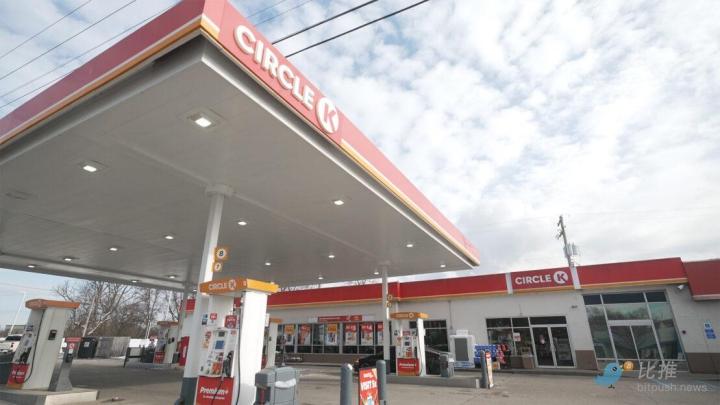I. What is Heima?
Heima is a decentralized platform built on blockchain technology, with the core objective of achieving cross-chain interoperability through Chain Abstraction technology. In other words, Heima hopes to use innovative technical architecture to connect different blockchains seamlessly, like the Web2 internet, and eliminate the barriers between chains. Unlike other cross-chain bridge protocols, Heima is not just a simple bridge; it provides users with a unified operation interface through Chain Abstraction technology, allowing them to freely move assets and execute smart contracts across multiple blockchains without worrying about the underlying chain differences. When using Heima, users do not need to frequently switch wallets or adjust Gas fees, as all cross-chain operations can be completed within the same interface, greatly simplifying the development of decentralized applications (DApps) and the user's operation process.II. Heima's Operating Model
Heima's operating logic is based on several innovative technical pillars, the combination of which makes cross-chain operations simpler and more efficient. First, Heima inherits Litentry's technology in the field of decentralized identity (DID), allowing users to have a unified identity across multiple blockchains. This not only helps improve the security of identity verification, Bit also effectively protects user privacy. Heima adopts the Trusted Execution Environment (TEE) technology, ensuring that all sensitive data is encrypted during processing and only decrypted with user authorization. This provides a high-security infrastructure for the Heima platform, allowing it to improve operational efficiency while protecting privacy. Heima uses the Intent-Based Execution mode, allowing users to set simple goals and automatically plan the optimal transaction path. This means that users no longer need to manually bridge assets or adjust Gas fees when making cross-chain transactions, Bit the system's intelligent calculation will automatically complete all necessary operations, greatly improving the convenience of transactions.III. Heima's Technical Core
Heima's technical core lies in its Chain Abstraction architecture, which aims to simplify the complexity of cross-chain operations, allowing users and developers to operate assets in different blockchains on a unified platform. Through this architecture, Heima can achieve seamless cross-chain interaction and solve the compatibility issues between different blockchains. In addition, Heima also adopts decentralized identity (DID) technology, allowing users to use a unified identity for identity verification and cross-chain operations across multiple blockchains. Users not only can perform identity authentication on the platform, Bit can also flow freely between different decentralized applications (DApps), eliminating the problem of identity fragmentation in the multi-chain ecosystem. To ensure security, Heima uses Trusted Execution Environment (TEE) technology, which protects user privacy by encrypting data, thereby enhancing the security and decentralization of the platform. At the same time, the Intent-Based Execution technology allows users to set their own goals, and the platform will automatically calculate the optimal cross-chain transaction path, simplifying the user's operation process.IV. Heima Team Introduction and Financing Information
Heima's core team comes from Litentry, and the team members have accumulated rich experience in decentralized identity management, privacy computing, and blockchain technology. Litentry has been deeply cultivating the Polkadot ecosystem since 2020 and has successfully developed a decentralized identity (DID) system, laying a solid foundation for Heima's technology. After the brand upgrade, Heima still maintains close ties with the Polkadot ecosystem and inherits Polkadot's cross-chain advantages. Although Heima has expanded its multi-chain support to include Ethereum, Solana, and other mainstream blockchains, its unique Chain Abstraction technology gives it a significant technical advantage in the field of cross-chain interoperability. The project received early-stage support from the Polkadot ecosystem fund and has established cooperative relationships with multiple top exchanges, which provides a guarantee for Heima's liquidity. The listings on Binance and Bitget have brought more market attention to the HEI token and laid a good foundation for the ecosystem building.V. Heima Token Economics
The HEI token is the core of the Heima ecosystem, undertaking multiple functions such as payment, governance, and cross-chain interoperability. As the native asset of the Heima network, HEI is not only the payment medium for cross-chain transactions, Bit it can also be used as a tool for decentralized governance. Users holding HEI tokens can participate in important decisions of the ecosystem, such as protocol upgrades and resource allocation of the platform. This governance mechanism gives users a higher sense of participation and control on the Heima platform. In addition, the HEI token can be used to pay the Gas fees for cross-chain transactions, eliminating the differences in Gas fees between different blockchains and making cross-chain operations more convenient. The token economic model of HEI aims to promote the long-term sustainable development of the ecosystem, while providing sufficient incentives for developers and users to ensure the platform's liquidity and activity.Followin' the allocation method is as follows:- The ecosystem fund has been reduced from 29.1% to 24.1%, still used to incentivize developers and build the ecosystem, but the release rhythm has been optimized to balance market supply and demand
- A new 5% has been added to the decentralized finance liquidity reserve, used to enhance market liquidity and the development of the DeFi ecosystem
- The foundation fund remains unchanged at 3.2%, supporting the long-term development and operation of Heima
- The team fund remains at 1.25% and is still locked, ensuring the alignment of interests between the team and the community
- The circulating tokens account for 66.45%, meaning that a considerable proportion of HEI is already freely tradable on the market, reducing the short-term selling pressure caused by token release
VI. Analysis of Heima's Future Value
Heima's cross-chain ecosystem has already demonstrated strong technical potential, particularly in the areas of chain abstraction technology and cross-chain interoperability, bringing a smoother operational experience to users and developers. As Heima's platform ecosystem continues to expand, especially as developers in areas such as decentralized finance (DeFi), Non-Fungible Token (NFT), and GameFi begin to integrate with its framework, the demand for the HEI token will gradually increase, driving up the platform's value. Heima's greatest competitive advantage lies in its chain abstraction architecture, which simplifies the complexity of cross-chain interactions, allowing users to no longer need to worry about the differences in underlying blockchains. This feature undoubtedly provides a new solution for blockchain interoperability in the multi-chain era. As more and more users and projects join the Heima ecosystem, the application scenarios of the HEI token will also continue to expand, thereby driving its value growth. Currently, the HEI token has been listed on The First exchange, becoming an important part of the cross-chain ecosystem. Now, by registering with The First, you can enjoy the HEI's fast trading service and seize the historic opportunity of the chain abstraction revolution! In the future, as the platform continues to improve and more application scenarios are realized, the HEI token is expected to become the core hub of cross-chain interoperability, helping users and developers achieve smoother interaction and value transfer in the multi-chain world.






